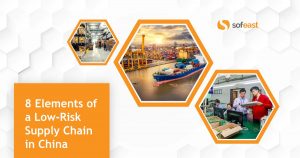I have been enjoying the book Upstream: The Quest to Solve Problems Before They Happen by Dan Heath.
It is not really a business book, as it covers many examples outside of business, but it does a great job of arguing in favor addressing problems at the root cause level.
That’s something that many people in the fields of quality management and continuous improvement are already very familiar with, but that most other people tend to overlook.
Why “Upstream”?
That’s an image they pulled from this parable:
You and a friend are having a picnic by the side of a river. Suddenly you hear a shout from the direction of the water—a child is drowning. Without thinking, you both dive in, grab the child, and swim to shore. Before you can recover, you hear another child cry for help. You and your friend jump back in the river to rescue her as well. Then another struggling child drifts into sight . . . and another . . . and another. The two of you can barely keep up. Suddenly, you see your friend wading out of the water, seeming to leave you alone. “Where are you going?” you demand. Your friend answers, “I’m going upstream to tackle the guy who’s throwing all these kids in the water.”
—Irving Zola
The author makes some good points throughout the book. I covered a few of them below.
Fixing a problem UPSTREAM is a much better use of resources than fixing the problem’s consequences DOWNSTREAM
In the parable above, getting “the guy who’s throwing all these kids in the water” to stop is probably far more effective than trying to save every kid one by one (as they are already exhausted, and in some cases already drowning).
Many managers spend their time fighting fires (downstream), never fixing the issues at the root by rethinking a process, documenting how a certain job is to be done, adding a mistake-proofing device, etc.
 Here is a very simple form of mistake-proofing that is mentioned in the book: making it impossible to throw away the plastic tray (in a fast-food restaurant). See the photo on the right (source).
Here is a very simple form of mistake-proofing that is mentioned in the book: making it impossible to throw away the plastic tray (in a fast-food restaurant). See the photo on the right (source).
And, to use the current pandemic as an example, here are two upstream actions that might have reduced the impact of the outbreak (or prevented it completely):
- China could have made it illegal to eat all sorts of wild animals after it triggered SARS in 2002. And enforced it with vigor.
- Governments should have set up “a case database that is instantly accessible to the relevant organizations and rules that require countries to share their information” (Suggestion from Bill Gates).
- Countries around the world could have communicated clearly and truthfully about the risks to their populations, from the start. It would have softened the blow.
The list could be much longer. There were many ways to be better prepared. China is not the only party at fault here.
Fixing problems UPSTREAM often requires dealing with people in a tactful manner
The author takes a great example. When collecting data, comments, and other information, that can be done with the purpose of inspection (and sometimes disciplinary action), or with the purpose of learning.
Again, this will be obvious to most people working on continuous improvement. If people feel threatened, they won’t help by providing insights and suggestions, and they won’t make implementation easy. Another way to put it: people don’t want to see change forced onto them.
Changing a system, in order to get a better outcome, can be a complex task
In some cases, an engineer makes a change that triggers unexpected consequences, including disproportionately large problems.
The business world has devised some good approaches to this — Toyota’s ‘only change 1 factor at a time, and observe the effect in order to learn about the process’, designs of experiments, etc. This is not covered in the book, which is more geared at a very general public.
*****
By the way, this author has co-authored several other good books, including Decisive (on the importance of making important decisions based on a sound process) and Switch (on effective ways to drive change), that I fully recommend.
What are your thoughts on upstream thinking? Have you read this book or have any other to recommend?
8 Elements of a Low-Risk Supply Chain in China
This FREE webinar will empower you to transform your supply chain in China to reduce risks. Two industry experts, Renaud Anjoran and Paul Adams from Sofeast, talk you through how to gain control over your product’s quality, on-time shipments, long-term pricing stability, and continuity of supply.
Ready to watch? Register by hitting the button below:


